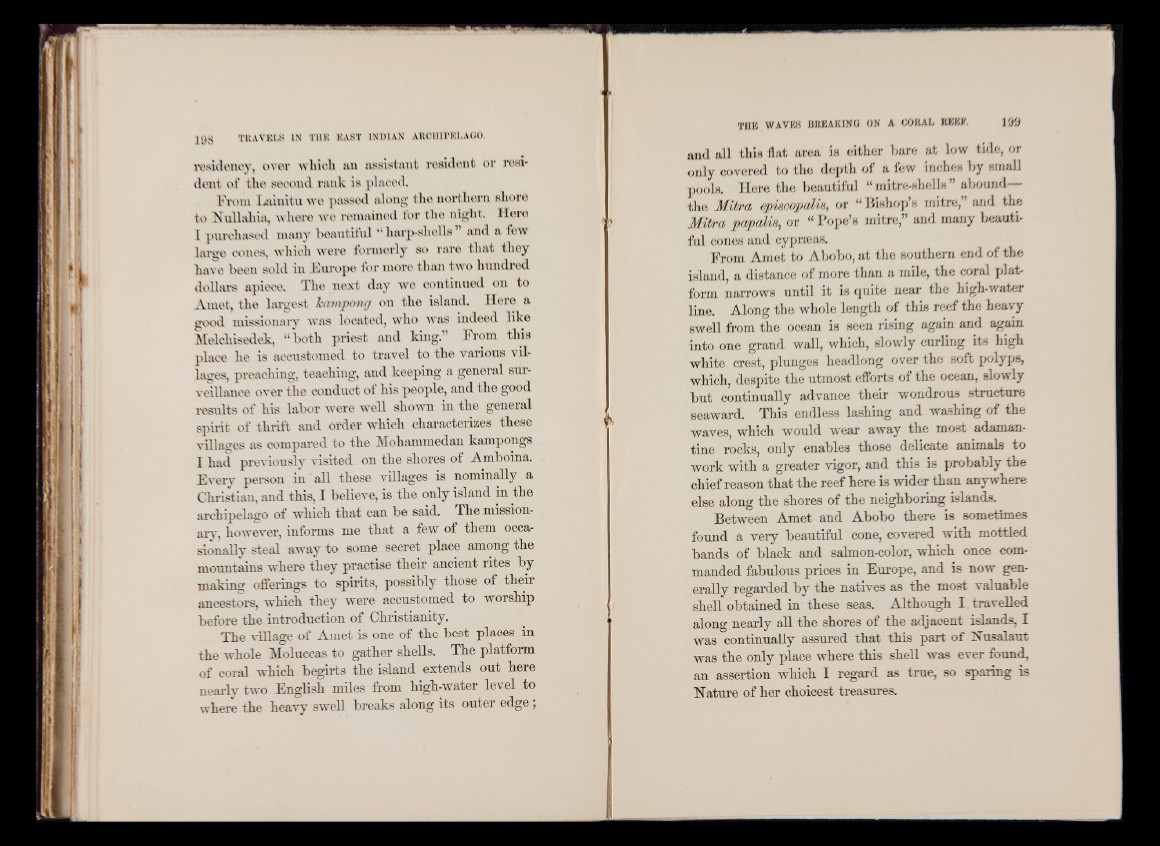
residency, over which an assistant resident or resi*
dent of the second rank is plaoed.
From lAunitu we passed along the northern shore
to Nullahia, where we remained for the night. Here
1 purchased many beautiful “ harp-Bhells” and a few
large cones, which were formerly so rare that they
have been sold in Europe for more than two hundred
dollars apiece. The next day we continued on to
Amet, the largest havnpong on the island. Here a
good missionary was located, who was indeed like
Melchisedek, “ both priest and king.” From this
place he is accustomed to travel to the various villages,
preaching, teaching, and keeping a general surveillance
over the conduct of his people, and the good
results of his labor were well shown in the general
spirit of thrift and order which characterizes these
villages as compared to the Mohammedan kampongs
I had previously visited on the shores of Amboina.
Every person in all these villages is nominally a
Christian, and this, I believe, is the only island in the
archipelago of which that can be said. The missionary,
however, informs me that a few of them occasionally
steal away to some secret place among the
mountains where they practise their ancient rites by
making offerings to spirits, possibly those of their
ancestors, which they were accustomed to worship
before the introduction of Christianity.
The village of Amet is one of the best places m
the whole Moluccas to gather shells. The platform
of coral which begirts the island extends out here
nearly two English miles from high-water level to
where the heavy swell breaks along its outer edge;
and all this hat area is either bare at low tide, or
only covered to the depth of a lew inches by small
pools. Here the beautiful “ mitre-shells” abound—
the MiPra or “Bishop’s mitre,” and the
Mitra pupai/iS) or “ Pope’s mitre,” and many beautiful
cones and cypneas.
From Amet to Abobo, at the southern end of the
island, a distance of more than a mile, the coral platform
narrows until it is quite near the high-water
line. Along the whole length of this reef the heavy
swell from the ocean is seen rising again and again
into one grand wall, which, slowly curling its high
white crest, plunges headlong over the soft polyps,
which, despite the utmost efforts of the ocean, slowly
but continually advance their wondrous structure
seaward. This endless lashing and washing of the
waves, which would wear away the most adamantine
rocks, only enables those delicate animals to
work with a greater vigor, and this is probably the
chief reason that the reef here is wider than anywhere
else along the shores of the neighboring islands.
Between Amet and Abobo there is sometimes
found a very beautiful cone, covered with mottled
bands of black and salmon-color, which once commanded
fabulous prices in Europe, and is now generally
regarded by the natives as the most valuable
shell obtained in these seas. Although I travelled
along nearly all the shores of the adjacent islands, I
was continually assured that this part of Nusalaut
was the only place where this shell was ever found,
an assertion which I regard as true, so sparing is
Nature of her choicest treasures.